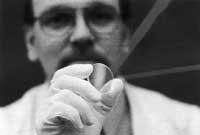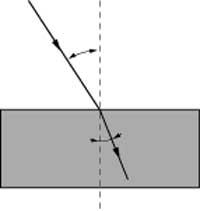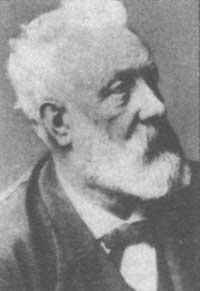Jules Verne and refraction
1994/10/01 Bandres Unanue, Luis Iturria: Elhuyar aldizkaria
Jules Verne, in his book “The Mysterious Island”, shows us three abandoned men in a territory without friends and how the fire was lit without any polo or lighter. In the case of Robinson Crusoe he gave the path a ray. Here, on the contrary, the path was to know in depth the skill of an engineer and the laws of physics. Remember the passage: Penoroff, a naive sailor, went hunting and upon his return found the journalist and engineer around the fire. Surprised, he said:
- But who has kindled the fire? asked the sailor
- Eguzki - replied Spilett
The journalist did not joke. That fire that surprised the sailor so much, it was the sun that lit. But to him it seemed a lie what his eyes saw and his surprise was so great that he did not remain without asking the engineer.
- Ah, did you have a magnifying glass? asked the engineer. No, but I have.
He taught it immediately afterwards. He did so with two crystals removed from his watches and those of Spilett. When he joined the edges with the clay, he filled with water the gap between the two. In this way he got a lens in the form of a lentil, through which he placed himself on a little dry moss concentrating the rays of the sun, lit the fire.
Some may ask: Is it necessary to introduce water? Or just not enough with two crystals? The surfaces of two crystals of the watches are parallel and physics shows us that when crossing these surfaces, the rays of light hardly suffer any change of direction. Therefore, it is impossible to concentrate on one point (focus). To achieve this, water is one of the transparent substances in which the speed of light is different from that of air. So he made a real engineer lens.
A pitcher, if spherical, full of water can do the same, that is, light fire. This is something known since ancient times and that despite lighting the fire, the water of the pitcher remains cold.
This can also be done with ice. Just make the ice transparent. The refractive index of ice is slightly lower than that of water. Therefore, with a good ice look we can make a lens. Let’s see how Julio Verne explains us in his book “Hatteraz Capitaren Menturak”.
Occupants are at a temperature of 48ºC below zero and have no way to light the fire:
"This is a tragedy," Hatteras told the doctor.
"Yes," he replied.
- We do not have glasses to remove lenses and light fire.
"I know," replied the doctor, "and I'm sorry because the sun's rays have enough force to light the tinder.
- What to do? “We will have to quench hunger with the raw meat of the bear,” Hatteras said.
"Yes," the concerned doctor whispered. But why not?
- What are you thinking? asked Hatteras.
- I have come up with an idea...
- an idea? said the contramaio. If an idea has happened to you, we are saved.
"I don't know how it will come out," the doctor said with doubts.
- But what have you thought? asked Hatteras.
- We don't have glasses but we can do it.
- How? said the contramaio.
- We will do it with a piece of ice.
- Can you…?
- Why not? All you have to do is concentrate the rays of the sun at one point and for this the ice behaves like the best glass. Anyway, I would prefer a freshwater cube because it would be harder and more transparent.
- If I'm not mistaken, said the boatman pointing out a lot of ice that was a hundred feet from him, that pile of ice, because of its color, is like the one you need.
- You are right. Grab the axe. Come on friends! All three of them went towards a lot of frost. Yes, the ice was fresh water.
The doctor asked to cut a foot of ice in diameter and began to carve. Then he conditioned it with a knife and finally polished it by hand, little by little. A transparent lens like the best glass was achieved. In the sky the sun was quite bright. The doctor passed the rays through the lens and concentrated on the tinder. He spent a few seconds and started burning the tinder.”
This passage from Verne is not a dream, since in 1763 in England a piece of wood with an ice lens was lit for the first time.

Gai honi buruzko eduki gehiago
Elhuyarrek garatutako teknologia






